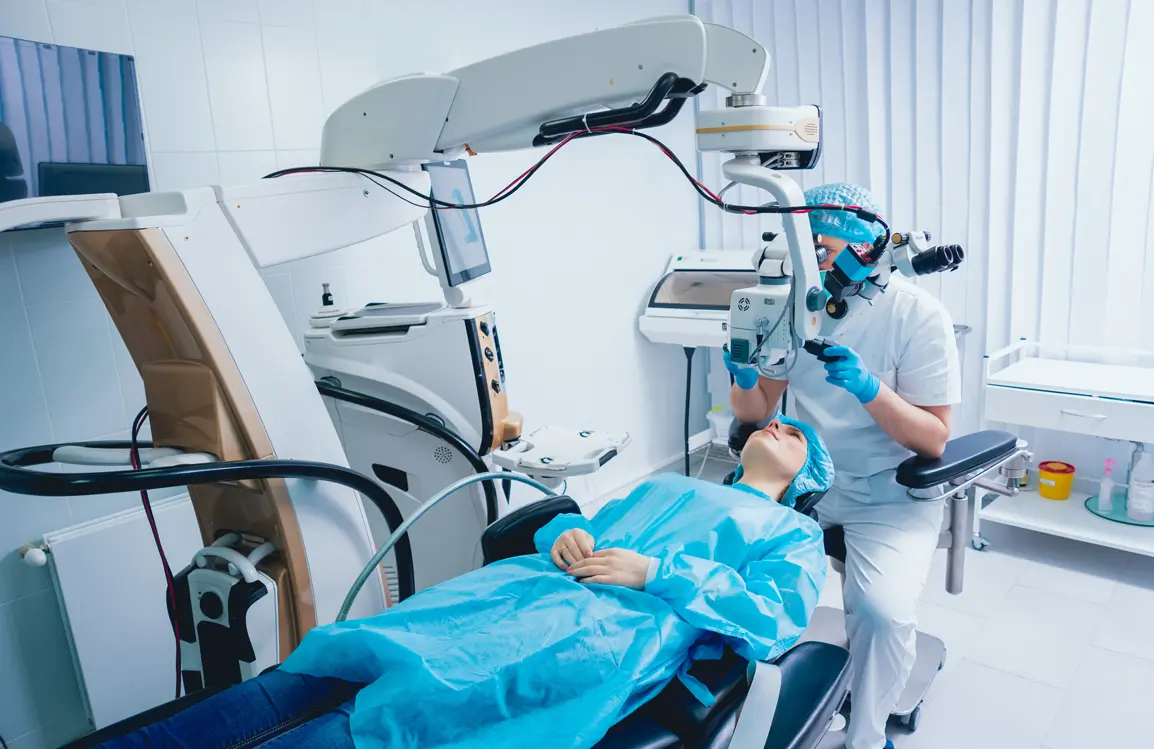Selective Laser Trabeculoplasty Treatment in Scottsdale
If glaucoma has caused the pressure in your eyes to increase, it may be time to seek treatment. You may qualify for selective laser trabeculoplasty (SLT). Schedule a consultation to see whether you’re an ideal candidate for this glaucoma treatment.
What Is SLT?
SLT is a type of minimally invasive laser eye surgery that reduces increased intraocular pressure (IOP) caused by glaucoma. It becomes necessary either when prescription eye drops don’t lower the IOP adequately or when the eye drops cause serious side effects. Patients with primary or secondary open-angle glaucoma who must lower their IOP may be candidates for this procedure.
Be aware that you may still need to use an IOP-lowering medication after undergoing SLT. Although the procedure can help manage glaucoma-induced IOP, it’s not a cure. Continue seeing Dr. Arora for necessary follow-up appointments.
How Does SLT Improve Glaucoma Symptoms?
The SLT procedure drains excess fluid and tissue from the eye, which lowers your IOP. Patients with a high IOP typically show improvements within one to three months after surgery.
What to Expect From the Procedure
Dr. Arora uses a cold laser, as minimal heat energy is absorbed by the eye’s pigmented tissue. That’s how SLT is less painful and produces less scarring than alternative methods. While this procedure causes fewer side effects than glaucoma medication, here are two possible side effects you should be aware of:
- Inflammation
Most glaucoma patients experience mild postoperative inflammation that’s treatable with non-steroidal anti-inflammatory medications or eye drops
- Elevated IOP
A small percentage of patients experience elevated IOP after surgery, which usually resolves itself within 24 hours


How SLT Works
SLT reduces a patient’s IOP by approximately 30% when used as a first step in the glaucoma treatment process. Below are some additional facts about this procedure.
- Patients already taking glaucoma medications may notice a reduced IOP after surgery, which may allow them to stop taking the glaucoma medications
- Detect and treat vision conditions in their early stages to prevent further vision loss
If a patient’s procedure effectively lowers their IOP for several years, they can seek repeat treatment. A repeated SLT surgery may or may not lower the patient’s IOP as well as the first procedure. If repeated several times, SLT surgery may produce no results. In this case, a patient would be prescribed glaucoma medications to reduce their IOP.
Request an SLT Consultation
If you’re ready to ditch the glasses or contacts and experience clear vision, schedule a LASIK consultation with Dr. Arora to see if this treatment option is right for you.




